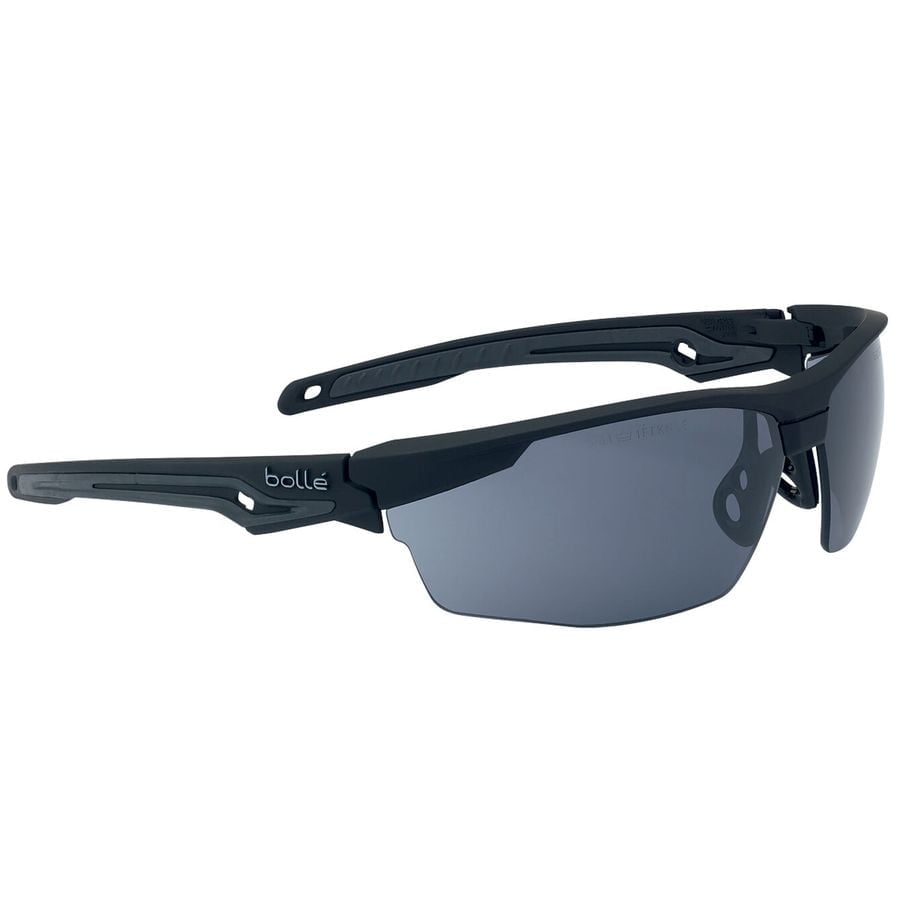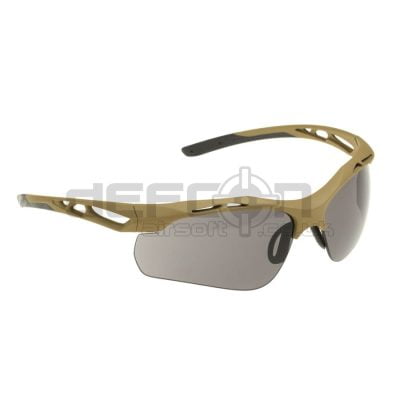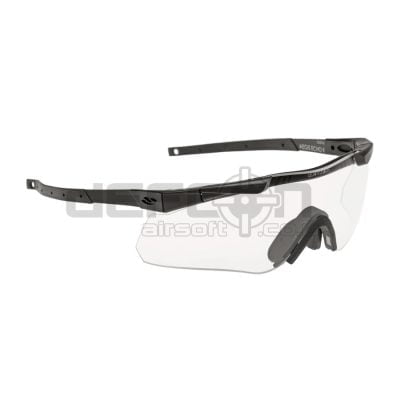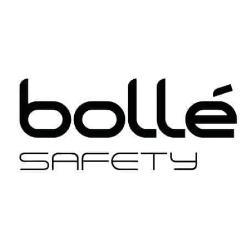Certified to STANAG 2920 / ANSI Z87.1 / MIL-PRF-32432A; EN166, EN172, Bolle TRYON BSSI (Bollé Safety Standard Issue) Smoke Lens Safety Glasses, Wrap-around equipped with co-injected FLEX160° temples, an adjustable nose bridge, and exclusive PLATINUM ASAF coating, TRYON perfectly combines innovation and absolute protection.
Smoke Lens – Outdoor Use
- Transmission 13%
- Filters UVA and UVB (99.99%).
- Engineered with the exclusive anti-fog / anti-scratch PLATINUM® coating.
Features:
- V50 ballistic resistance – STANAG 2920 : 777.6 km/h – 216.8 m/s
- Smoke PC lenses
- Panoramic field of vision
- Anti-scratch/anti-fog Platinum Coating
- Wrap-around & single-lens frame
- Adjustable Flex nose bridge
- Bi-material FLEX 160° PC/TPR temples
- Lens marking: 5-3.1 1 FT KN CE
- Frame Marking: EN166 FT CE
- Supplied with Microfibre pouch
Technical Info
- Weight: 26 g
- Frame Type: Half Frame
- Frame Material: PC/TPR
- Frame Colour: Black Matte
- Lens Material: Polycarbonate
- Lens Colour: Brown – CSP Lens
- Lens Coating: Platinum
- Ballistic Resistance: STANAG 2920 / ANSI Z87.1 / MIL-PRF-32432A
- Standards: EN166 – EN172
- Supplied With: Microfiber Pouch
Technologies & Standard
PLATINUM ASAF Coating Permanent coating on both sides of the lens gives them a high resistance to scratching and delays the onset of fogging. Certified K & N (EN166) PLATINUM® resists the most aggressive chemicals
Ballistic Resistance STANAG 2920 – In the case of Bollé Safety Standard Issue, goggles and glasses are subjected to impact tests using projectiles simulating ballistic fragments.
All the tests allow to calculate a V50 corresponding to the speed at which the projectile has a 50% chance to perforate the material. The value of the V50 varies according to the nature of the materials and therefore the colour of the lenses.











